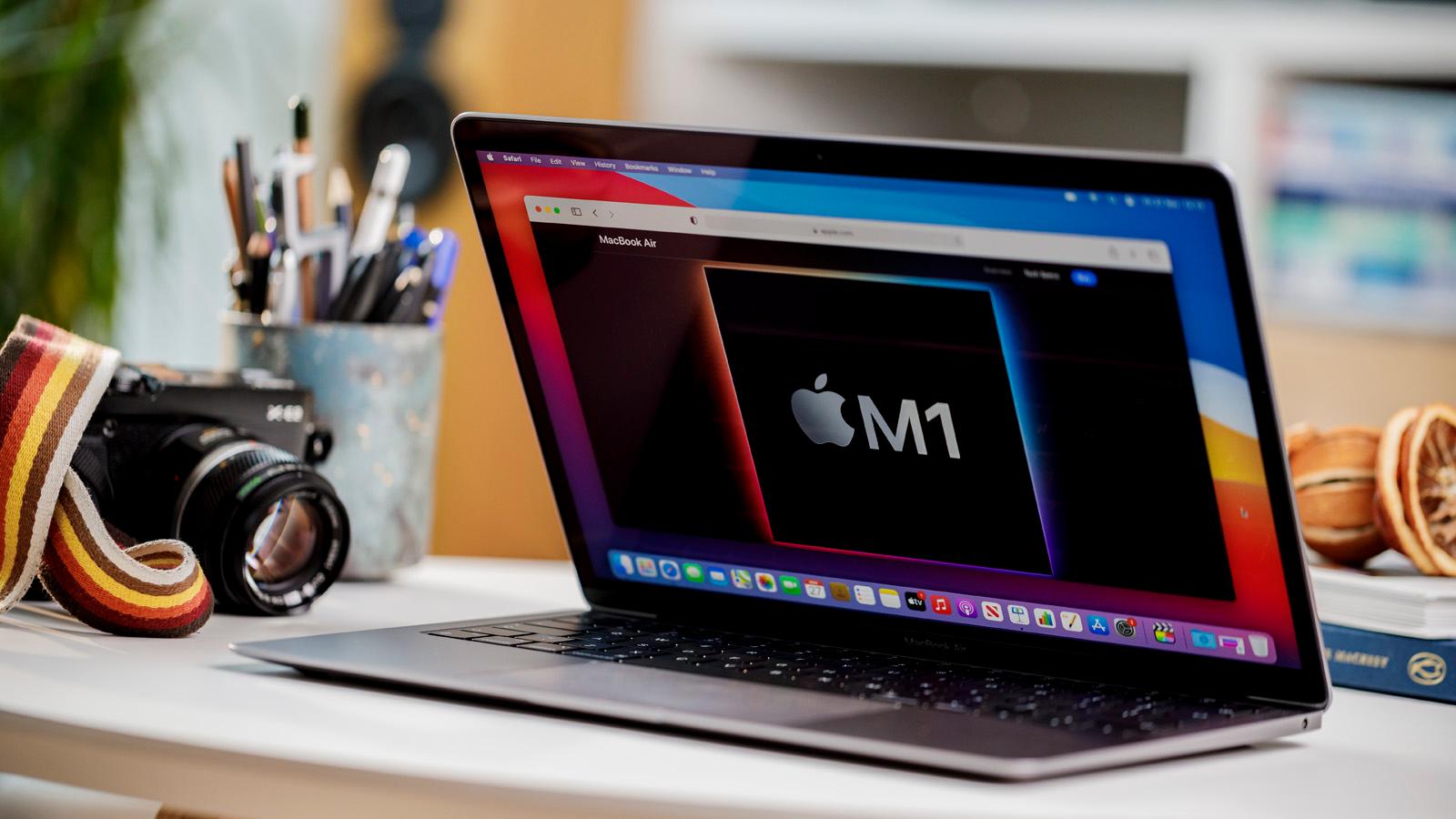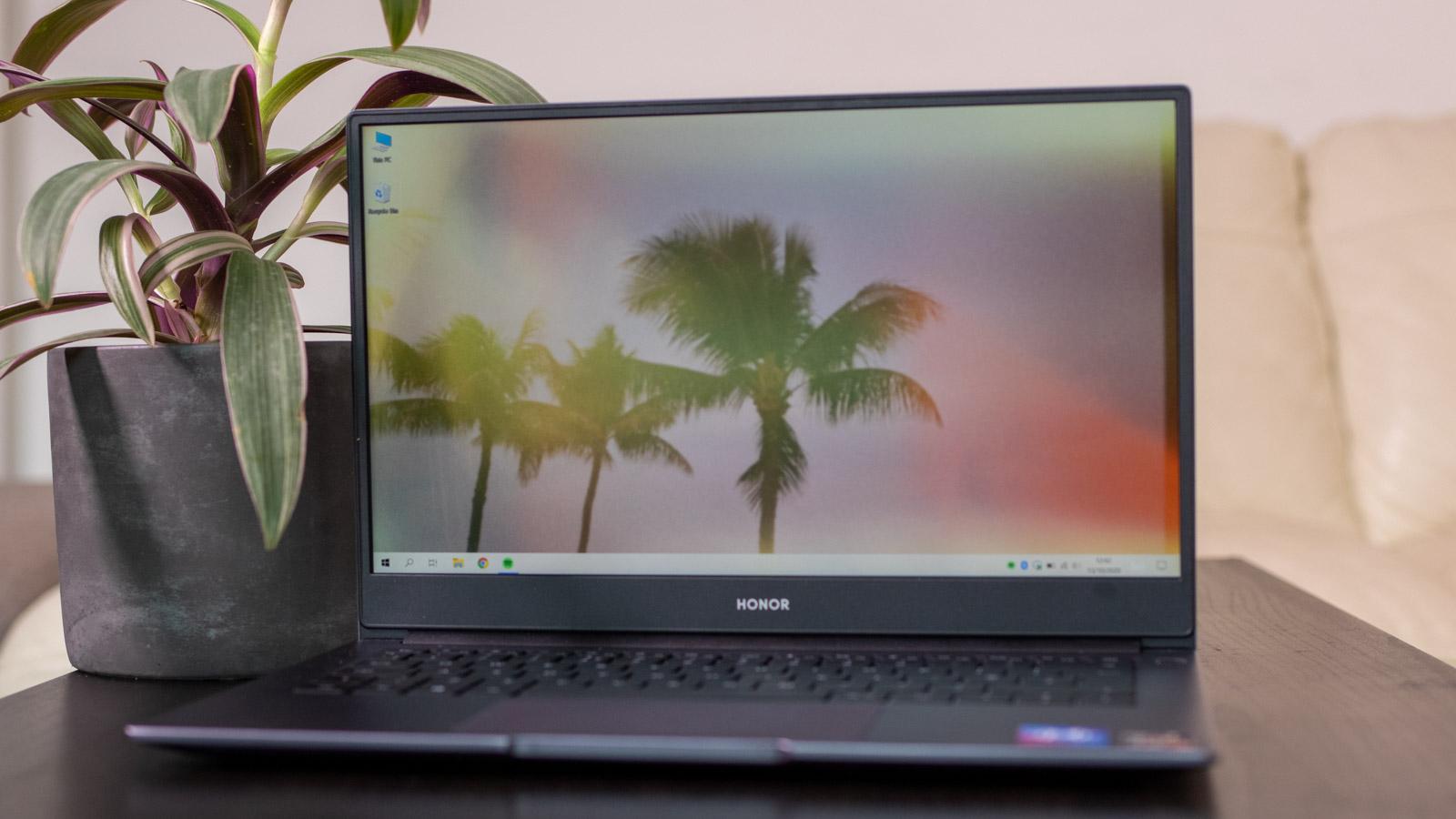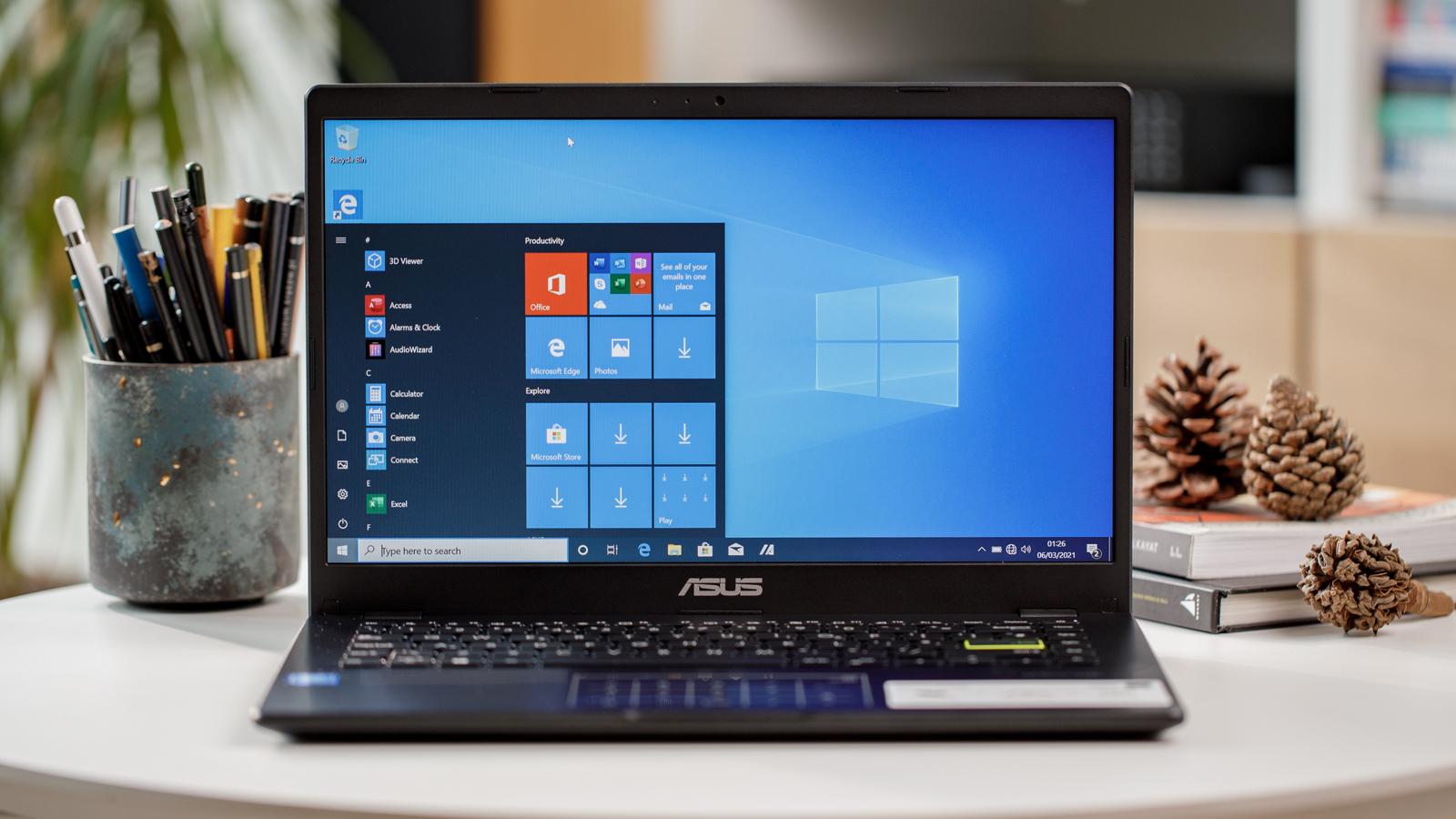Whether you’re writing up an essay, revising for test or keeping in touch with teachers and classmates, a laptop can do it all. However, the wealth of choice on offer makes it difficult to know which device to go for. There’s no one-size-fits-all solution that will work for every student; what someone needs from a laptop is highly dependent on what they’re studying and how they plan to spend their free time. With that in mind, we’ve aimed to include a range of options in this chart to suit different types of students. There should be something here for everyone, but don’t be concerned if your favourite device is lower on the list – we can recommend all these devices for students. Most are on the more affordable end of the market, but if some are out of your price range it’s worth checking out our best budget laptop chart. Conversely, if money is no object, you might want to consider our pick of the very best laptops on the market.
Best laptops for students 2022
Solid performance and port selection Great keyboard Excellent 90Hz display
Plain design Webcam only 720p
It serves as yet more proof that Huawei is acing its laptops, offering a great balance between price and performance. The latter is helped by Intel’s 11th-gen chips under the hood, which excel across almost all everyday productivity tasks. Of course, having an excellent 14in display helps, complete with a 90Hz refresh rate. Huawei has maintained slim bezels but managed to move the webcam back above the display, even if it’s still only 720p. Other highlights include all-day battery, an excellent keyboard and plenty of ports, something that’s often lacking on modern laptops. The key sticking point for students could be price, but it’s definitely worth considering if your budget can stretch this far. There is now a 2022 version, but aside from new Intel CPUs, nothing has changed.
Stunning thin and light design Gorgeous matte display Great battery life Impressively durable
Not the most powerful Display only 60Hz Expensive
The highlight here is a stunning 16in 2560×1600 display, with tiny bezels making for an immersive viewing experience – provided you don’t mind a 60Hz refresh rate. Everyday performance is also excellent, thanks to Intel’s latest Alder Lake processors and 8 or 16GB of RAM. There’s a healthy port selection, too, alongside an 80Wh battery and fingerprint sensor built into the power button, all within a device that weighs less than 1.2kg. The high asking price is the only reason it’s not higher in this list. If you’re a student with cash to splash, it’s a stunning bit of kit. For a more affordable 16in option, consider the Huawei MateBook D 16.
Excellent OLED display Impressive battery life Thin and light design 360° hinge works well
Poor 720p webcam No discrete GPU Trackpad needs work
However, the highlight is undoubtedly its 13.3in OLED display, which delivers an excellent, detailed viewing experience and touch support. A 65Wh battery doesn’t sound like anything special, but should comfortably last you a full day away from the charger. Intel’s 12th-gen CPUs ensure performance is solid, although there’s no option for a discrete GPU. The trackpad isn’t great and you’ll probably want to connect an external webcam, but aside from that there’s a lot to like. Samsung has nailed the basics here, even if you’ll find better value for money elsewhere.
Stellar performance Incredible battery life Free software included
Dated design Poor webcam Not the cheapest
The new Air offers truly incredible performance within a thin and light body, with the M1 chip also significantly boosting battery life compared to the Intel version. A largely unchanged design means a lot about the new MacBook Air will be familiar if you’ve tried a recent model, although the recently-introduced Magic Keyboard is a big upgrade over the earlier butterfly keys. It’s also easy to forget how much value Apple adds by including a pretty comprehensive suite of applications – you might not need to spend any extra money on software. There is now a 2022 MacBook Air, but the new chipset and a redesign means it’s significantly more expensive. This is where you’ll find the best value.
Great performance Premium design Solid battery life
Poor webcam No touchscreen More expensive than previous models
An impressive combination of powerful internals, premium design and solid battery life make it the student laptop to beat, especially when you consider its relatively affordable starting price. The MagicBook 14 uses a Ryzen 5 4500U chipset, up from Ryzen 5 3500U on its predecessor. Combined with 8GB RAM and a large 512GB SSD, it delivers excellent performance across the board. Ports, keyboard and a fingerprint scanner are all boxes that get ticks. Really, apart from the webcam placement, audio is about the only thing that’s not so good. There is a 2021 version of this device, but it’s not as impressive.
Great OLED screen Array Impressive range of ports Solid performance
Underwhelming battery life No high refresh rate screen Relatively expensive
While there’s no convertible functionality here, the high quality OLED touchscreen more than makes up for it. It’s one part of a stunning thin and light design – at just 1.16kg, it’s one of the thinnest 15in laptops around. Despite this, Samsung has managed to include a solid range of ports. Two USB-C, USB-A and HDMI are all included here, alongside a microSD card slot and 3.5mm headphone jack. Intel’s 12th-gen processors also deliver solid performance. But aside from price, there are a few other reasons why it isn’t higher on this list. Battery life from the 68Wh cell is underwhelming, while premium features such as a high refresh rate screen and discrete GPU are left out. Nonetheless, Samsung has made a great laptop here that students will enjoy using – if they can afford it.
Great keyboard Solid performance Thin and light Decent battery life
Often runs hot Slow charging No backlit keys
Microsoft’s premium Surface Laptop design is retained at this more affordable price point, with slim bezels giving the impression of a much more high-end device. The resolution of the 12.4in touchscreen is lower than many laptops, but it doesn’t feel like a compromise once you start using it. Performance from 11th-gen Intel Core i5 CPU is strong, although you’ll probably want to spend more to get 8GB of RAM. Elsewhere, the Laptop Go 2’s keyboard is one of the best you’ll find anywhere, while the thin (15.7mm) and light (1.16kg) design makes it very portable. It’s prone to overheating and still missing backlit keys, but it remains a solid option for students. It’s also worth considering the Surface Laptop 5, but its more affordable sibling is a better buy for most students.
Excellent display Solid performance Keyboard case included
Poor battery life Frustrating fingerprint sensor Limited ports
At just 790g case-free, it’s light enough to throw into a bag and take to lectures. But having the Smart Magnetic keyboard included in the cost is a big plus, and transforms the device into a genuine laptop replacement. The 12.6in OLED display is a real highlight, while solid speakers and great cameras make it a well-rounded device. Performance across web browsing, word processing and multitasking is excellent, too. However, battery life is a big let-down, so you won’t want to be far from a charger for long. The fingerprint scanner is poor too, while you’ll need an adapter for connecting anything more than a single USB-C device. But if you can look beyond these compromises, the MateBook E is a compelling option for students that offers good value for money. The Surface Pro 9 might be the market leader, but it’s not worth most students paying significantly more money to get one.
Great battery life Lightweight and portable Fast and responsive
Cheap build Dim display Annoying NumberPad
The Intel Celeron N4020 doesn’t sound great on paper, but it delivers solid all-round performance that’s capable of handling the basics. There’s also excellent battery life, with Asus’ 12-hour claims holding up well in real-world usage – a full working day is well within reach. At just 1.3kg, it’s also extremely portable. You also get solid 14in Full HD+ display, although it doesn’t get particularly bright. The numberpad built into the touchpad is more annoying than useful, while the unusual rear design isn’t to everyone’s tastes. Still, these compromises are more than acceptable when you consider its affordable price.
Incredible M2 performance Stunning display Great accessories
Limited by iPadOS Very expensive Accessories sold separate
When paired with the stunning 12.9in, 120Hz display, it’s a real treat. Despite its size and quality, you can still expect solid battery life too. Pairing the tablet with the Magic Keyboard really does turn the iPad Pro into a laptop-style device – with trackpad and all – plus you might also benefit from the advanced features available with the Apple Pencil. However, these are both expensive accessories, meaning you can easily pay high-end laptop prices. That could be a sticking point, especially when iPadOS still lacks Mac-level apps. Nonetheless, it’s an amazing all-in-one setup if you can afford it. Do you really need a $1,000/£1,000+ laptop? Will it get broken, or worse, stolen? While more expensive laptops will get you better gaming performance, that probably isn’t a priority if you’re focusing on coursework and exams. Powerful devices may still be necessary if you’re studying a course that requires complex software – think animation or video editing. In these scenarios, you don’t want to be waiting around forever for things to render when you have a deadline. However, those who simply just need to write word documents and browse the internet can spend a lot less and still find a laptop that’s perfectly good. Bear in mind that cheaper laptops will come with a lower-grade display which is likely to be on the dim side and not very crisp either. It’s just one of the compromises, so if you need to do something like photo editing then splashing a bit more cash will be well worth your while. Cheaper options may come with a lower-power Intel Pentium chip. They will also have a lot less RAM and may not include an SSD, so make sure it will be up to the job first. Do you want a lot of travel on your keys, or something flatter and slim? Do you need a full-size keyboard with a numberpad? Sacrificing that will allow you to get a more compact design that’s easier to take everywhere with you. This means you can’t just plug in an old-school USB flash drive or HDMI cable without getting an adapter (or dongle). Since cheaper laptops are chunkier, they typically have more space for full-size ports and this could be a real benefit. Also, remember that laptops don’t come with a CD/DVD drive any more. If you need one, an external drive is a must. Windows 11 has now been out for a few months, and you’ll probably have been prompted to upgrade if you have a Windows 10 device. But it’s not necessary yet, with the older OS still supported until 2025. However, Windows is by not your only choice when it comes to software. You may prefer macOS, especially if you have an iPhone or iPad. If you’re not sure which will best suit your needs, it’s worth seeing if the specific apps you need are compatible and if it feels intuitive. Try a friend’s or test out a few devices in a physical store if you need to. There are other options such as ChromeOS which is extremely easy to use, but does require an internet connection for full functionality. The tablets we’ve included are also intuitive, but again, make sure they will be able to run the apps you need first. As the resident expert on Windows, Senior Staff Writer Anyron’s main focus is PCs and laptops. Much of the rest of his time is split between smartphones, tablets and audio, with a particular focus on Android devices.





